Mass movement & Ground Water
by Devender
0 2616
Mass movement & Ground Water
- Mass movement:
- The gradient of the slope
- Weight of the weathered material
- Presence of a lubricating agent such as water
- Soil Creep:
- The movement is unnoticeable when the slope is gentle or land is covered with grass and vegetation
- It is very common in damp soils where water acts as a lubricant, allowing soil particles to move over each other & over the underlying rock
- The movement is slow but it still tilts the trees, fences, posts & so on which are rooted in the soil
- Soil Flow/Mud Flow (Solifluction):
- Landslide (Slumping or Sliding):
- It mainly occurs due to the lubricating action of rainwater
- Slumping is usually common in areas where permeable debris or rock layer overlie impermeable strata such as clay
- The water sinking through the permeable layer is halted by the clay
- The damp clay provides a smooth slippery over which the upper layers slide easily
- Groundwater:
- It re-enters the hydrological cycle by way of springs
- Spring is an outlet of the stored groundwater where the water reaches the surface
- Well is a man-made outlet of groundwater
- The amount of water available as groundwater depends on the climate, nature of the rocks (absorbing power) & seasons of the year
- Water table:
- The permeable rock in which the water is stored is known as aquifer
- The surface of the saturated area is called the water table
It is the movement of weathered material due to gravitational pull. The movement may be gradual or sudden which depends on a number of factors such as:
It is the slow and gradual movement of soil down the slope which is continuous.
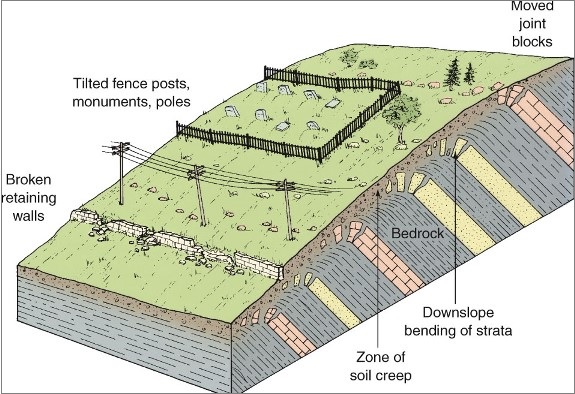
The soil gets accumulated at the bottom of the hill or behind obstacles such as walls. These walls are often broken due to the weight of the soil.
When the soil has a lot of water, the soil particles move easily over each other and over underlying rocks. This soil acts as a liquid mixture & soil flow or mudflow occurs. It is known as Bog-Burst in Ireland.
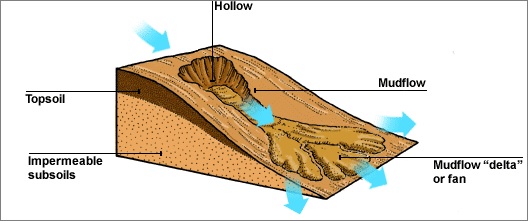
It is a very rapid movement that results in a large mass of soil & rock falling suddenly. Landslides commonly occur on steep slopes or due to earthquakes and volcanic activities.
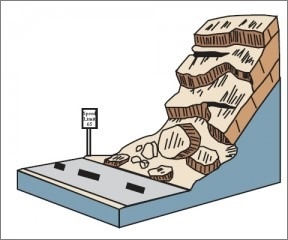
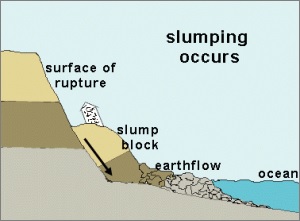
Humankind also enhances the possibility of landslides by cutting the vegetation in the area allowing more water to penetrate through soil and rocks.
When rain falls on the earth, it is distributed in various ways. Some of the water gets evaporated immediately and returns to the atmosphere as water vapors while some are absorbed by plants which are again returned to the atmosphere by transpiration from the leaves of the plant. Whereas, some of the water flows into rivers and streams, finding its way to the seas & oceans.
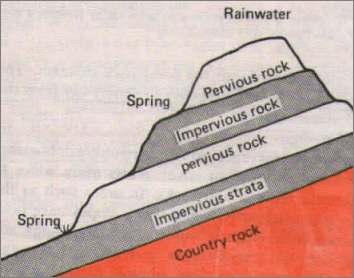
A large amount of water coming from snow and rain finds its way through the surface which is known as groundwater. It plays a huge role in mass movement & weathering and is important water storage.
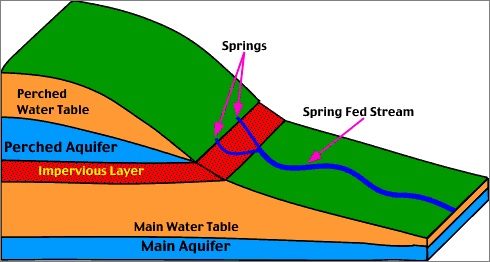
The absorbing power of a rock is determined by its porosity, permeability & its structure. For example - Sandstone is both porous & permeable, Clay is highly porous but impermeable, Granite is crystalline but impermeable
Water that moves down through the surface keeps moving down until it meets an impermeable layer of rock through which it can not pass. If there is no groundwater outlet, then this water gets accumulated above the impermeable layer & saturate the rock.
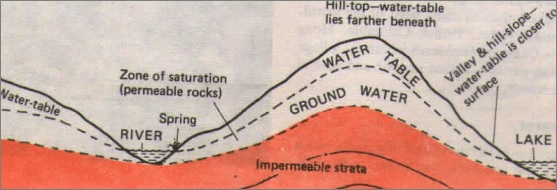
The depth of the water table varies with seasons, reliefs, and type of rocks. It is far below in hilltops but is close in flat surface areas.

Share:

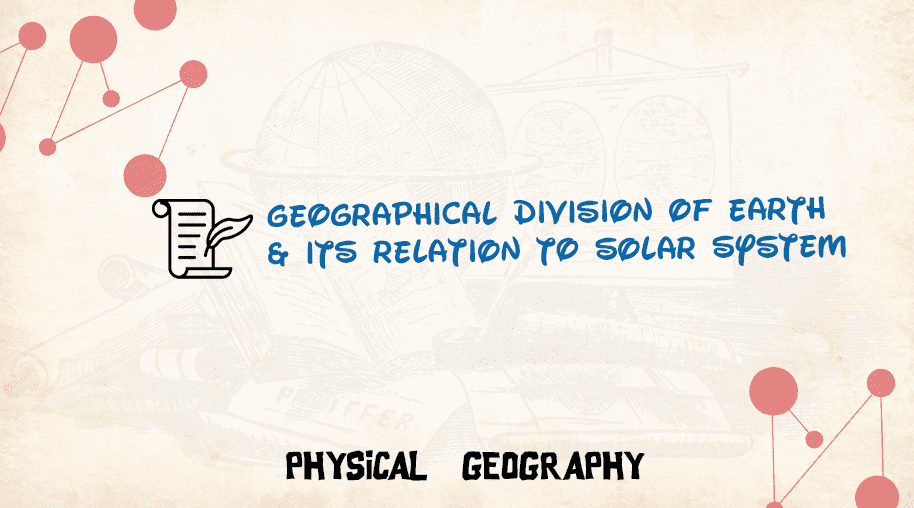
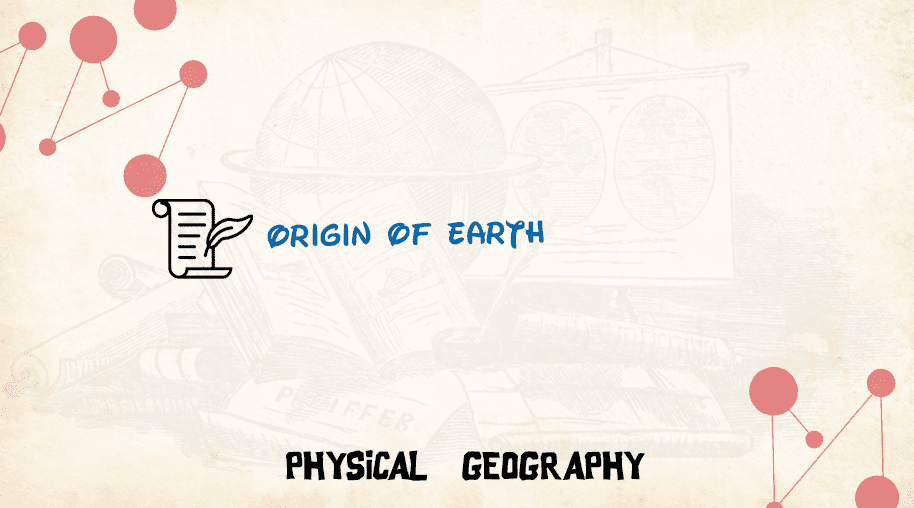
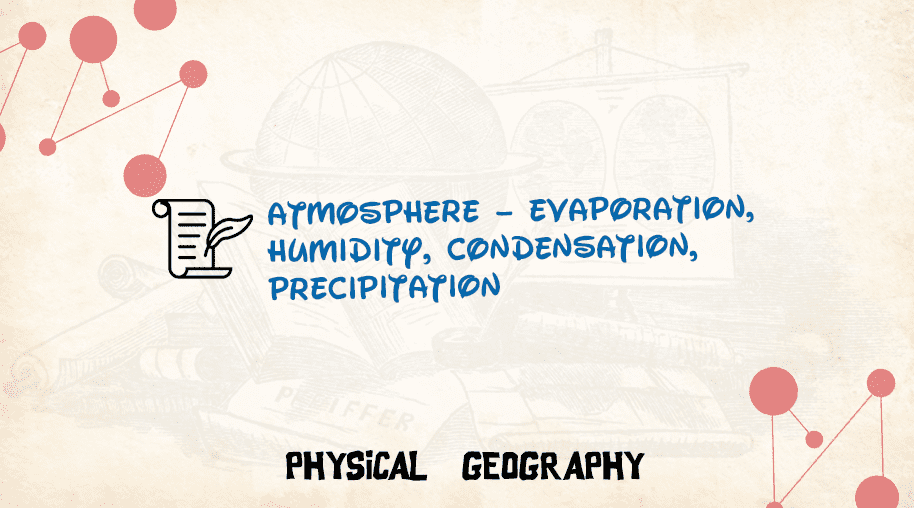
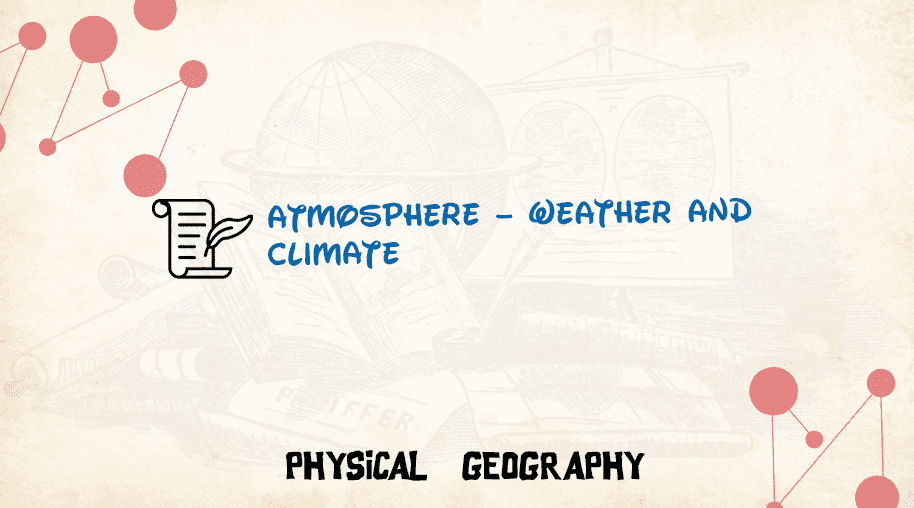


Comments
Waiting for your comments